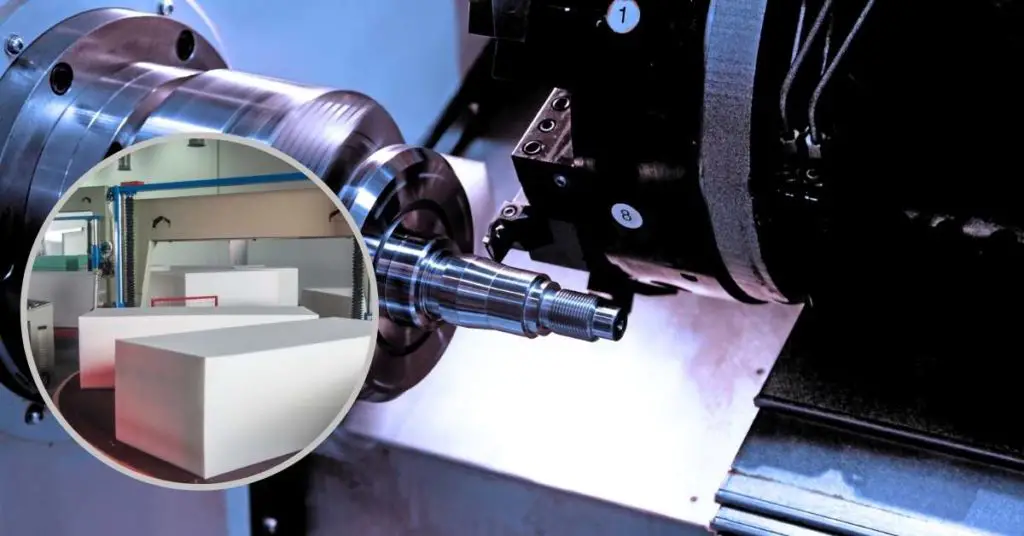Can Really Turn Foam on a Lathe?
You can turn foam on a lathe. And it’s not nearly as hard as you might think. In fact, with a little practice, anyone can turn perfect foam spheres on a lathe.
The key to success is to start with a perfectly round piece of foam. You can buy pre-cut pieces of foam from most craft stores, or you can cut your own from a larger block of foam. If you’re cutting your own, use a sharp knife and cut slowly and evenly to get a nice, clean edge.
With a little bit of practice, anyone can turn perfect foam spheres on a lathe. Give it a try today!
Visual Explanations: https://www.youtube.com/watch?v=eZB5sOtU2VQ&t=29s
How to Turn Foam on a Lathe?
Step 01: Prepare The Foam:
Start by finding a sheet of foam that is at least 2-3 inches thick. You will also need a sharp knife to cut the foam into the desired shape.
Be sure to wear gloves and a dust mask to avoid inhaling the foam particles. Finally, add two to both sides of the rigid foam block you prepared.
Step 02: Setup a Foam on The Lathe:
Now it’s time to set up the foam on the lathe. For this, you will need to use the spindle and the stock.
Just like at wood setting up, what you need to do is place both sides of the foam on the spindle and stock and give a gently tight. This will help to stabilize the block while you are working on it.
Step 03: Adjust The Tool Rest & Start Lathing:
The next step is to adjust the tool rest. For this, you need to place it in such a way that it is about an inch away from the foam block. Once you have done that, you can start the lathe and begin working on the foam.
Step 04: Work Gently & Carefully:
Since the foam is a soft material, you need to work gently while lathing it. Be careful not to apply too much pressure as it can cause the foam to break or chip.
Step 05: Finish Up:
Once you have reached the desired shape, you can stop the lathe and remove the foam block from it. You can then sand it down to smooth out the surface and apply a finish of your choice.
Visual Explanations: https://www.youtube.com/watch?v=Q-AOgpYvTs0
The Types of Rigid Foams
Expanded Polystyrene (EPS):
This is the white rigid foam that is commonly used in packaging and insulation. It is made by expanding beads of polystyrene with steam.
Extruded Polystyrene (XPS):
A type of rigid foam that is made by extruding polystyrene through a die. It has a higher density than EPS and is used for applications where higher strength is needed.
Polyisocyanurate (Polyiso):
A type of rigid foam that is made by combining polyisocyanates with other chemicals. It has a higher R-value than EPS and XPS, making it a good choice for insulation.
Visual Explanations: https://www.youtube.com/watch?v=xdnLOv-zf_o
Which Rigid Foam Insulation is Best to Turn on a Lathe?
When it comes to working with lathes, there are a few different types of foam that can be used. However, polyisocyanurate foam is often considered the best option.
This type of foam is very dense and durable, which makes it ideal for working with lathes. It is also highly resistant to heat so that it can be used in a variety of applications. Plus, it is very easy to work with and can be cut into any shape or size that you need.
Things You Can Make Using Rigid Foams on a Lathe
Rigid foams are versatile materials that can be used to create a variety of different objects. While they are most commonly associated with insulation, rigid foams can also be used to create everything from picture frames to toys.
If you have a lathe, you can use rigid foams to create a wide variety of different objects. Here are just a few of the things that you can make using rigid foams on a lathe:
-Picture frames: You can use rigid foam to create beautiful and unique picture frames. Simply cut the foam into the desired shape and then use a router to add any decorative details that you want.
-Toys: Rigid foam is also great for making toys. You can create all sorts of different shapes and sizes and add details like paint or decals to personalize them.
– Flowerpots: If you’re looking for a unique way to pot plants, try using rigid foam. Cut the foam into the desired shape and then add drainage holes before adding soil and plants.
There are endless possibilities for what you can make using rigid foams on a lathe. So get creative and see what you can come up with!
Safety Measures to Follow When Turning Rigid Foams on a Lathe
Turning rigid foams on a lathe can be dangerous if the correct safety measures are not followed. Here are some safety tips to keep in mind when working with rigid foams:
- Always wear proper personal protective equipment (PPE), including gloves, goggles, and a dust mask.
- Inspect your work area and tools before beginning any project. Make sure there are no loose objects that could become projectiles during operation.
- Set up your lathe according to the manufacturer’s instructions. Be sure to use all recommended guarding devices.
- Feed the foam into the lathe slowly and steadily, using even pressure. Do not force the material or allow it to bind in the chuck.
- Keep your hands away from the cutting tool and rotating foam at all times.
- Use sharp tools and replace them often to avoid excessive heat build-up that could melt the foam.
- When finished, turn off the lathe and allow it to come to a complete stop before removing any workpieces.
Related Matters
How to sand a foam creation?
The better way is to use a sponge sander. This can be bought at any hardware store, and all you have to do is wet the sponge sander and then start sanding!
Make sure to go in one direction to another so that you don’t create any dents in the foam. If there are any tough patches, you can use fine-grit sandpaper afterwards.
What is the best rpm to turn a foam on a lathe?
It really depends on what you want to achieve with your lathe and the type of foam you’re using. Generally speaking, the higher the rpm, the finer the finish on your foam project.
However, if you’re trying to make a large object, you’ll want to lower the rpm to avoid making too much dust. As always, it’s best to experiment to see what works best for your particular project!
Can you use a wood chisel for foam turning?
Yes, you can use a wood chisel for foam turning. It is important to use a sharp chisel so that you can get good results. Be sure to take your time and be careful when using the chisel, as it is easy to cut yourself.



